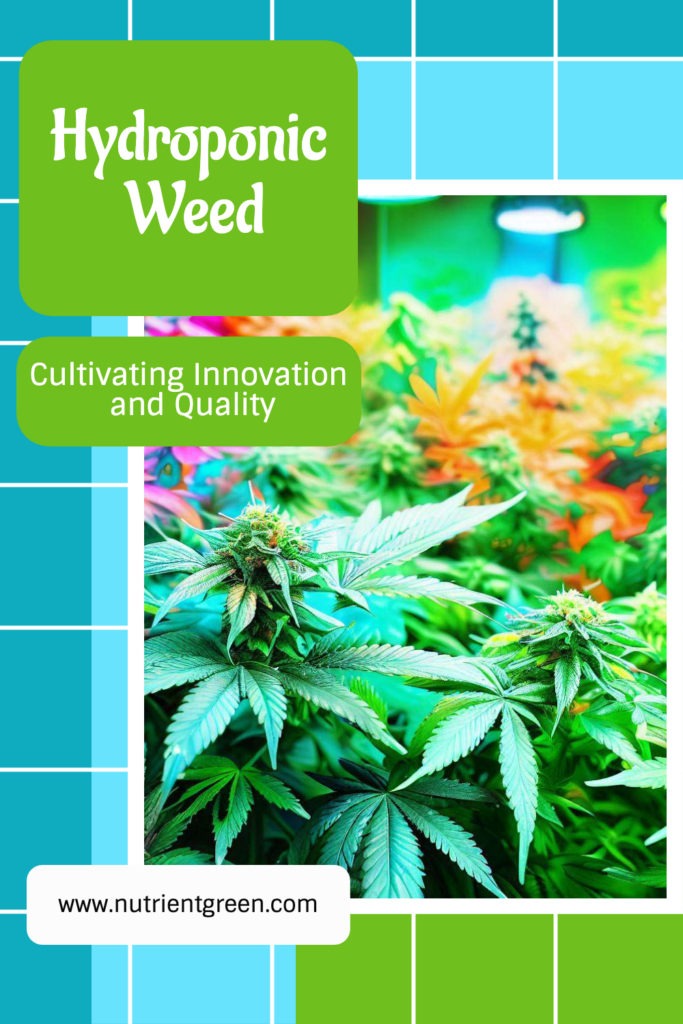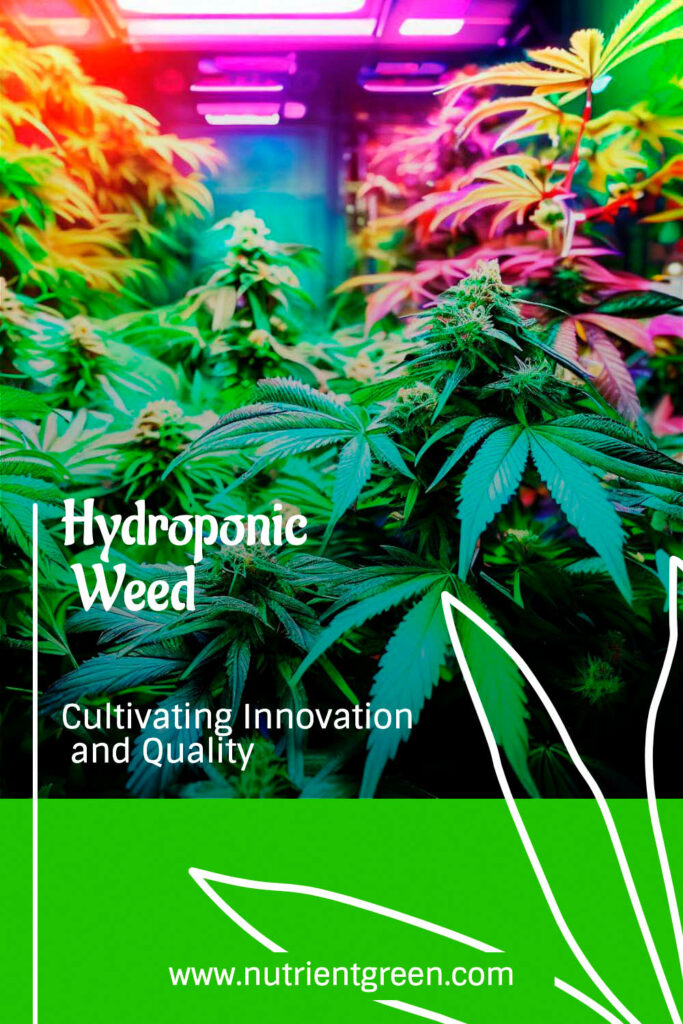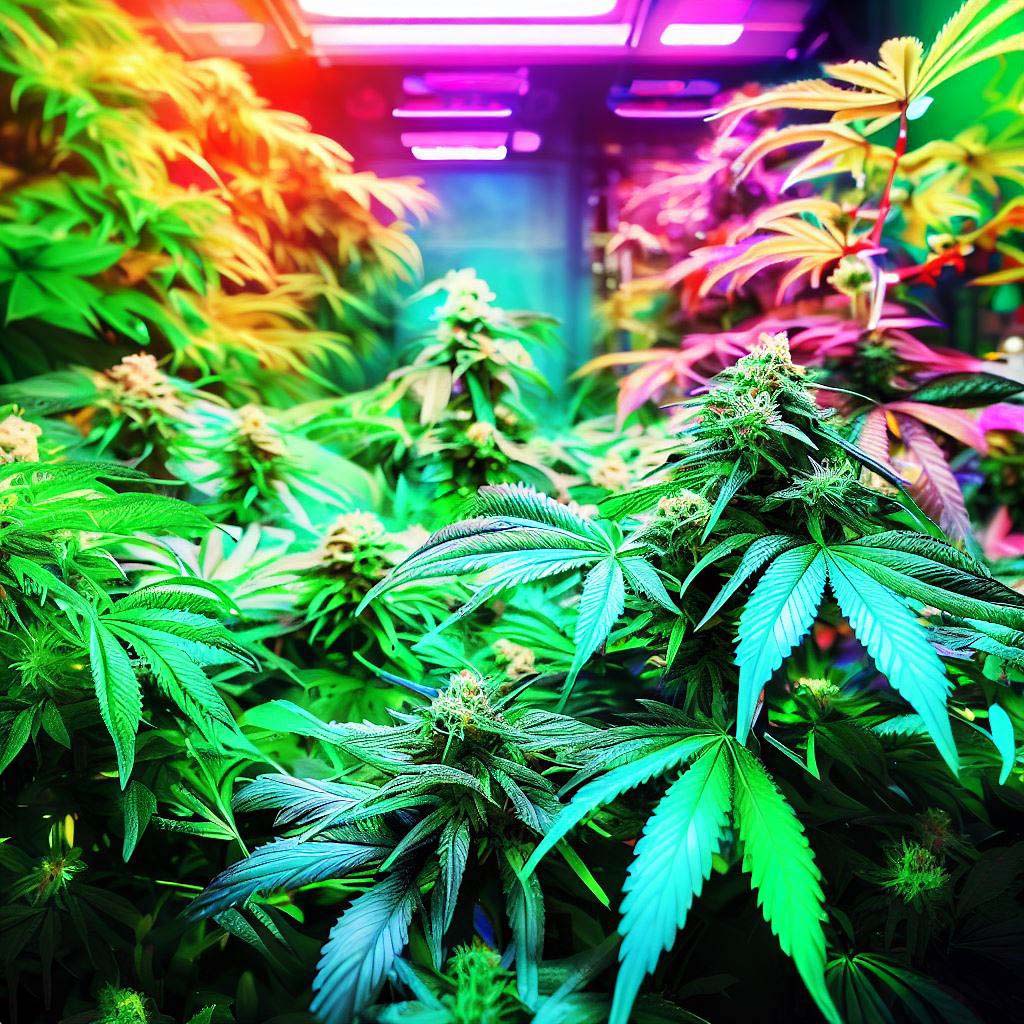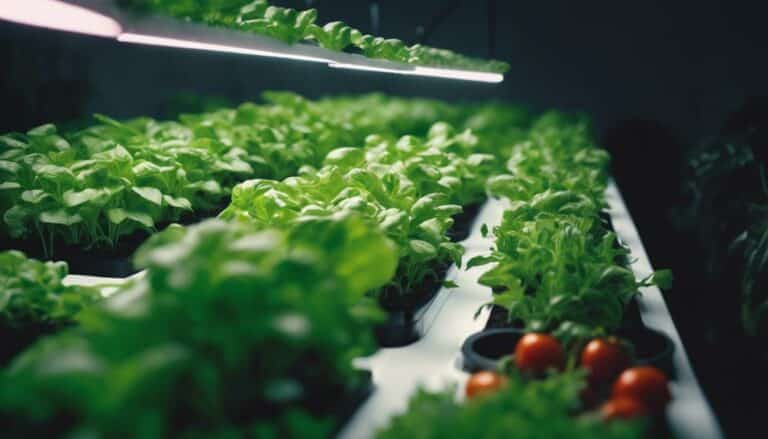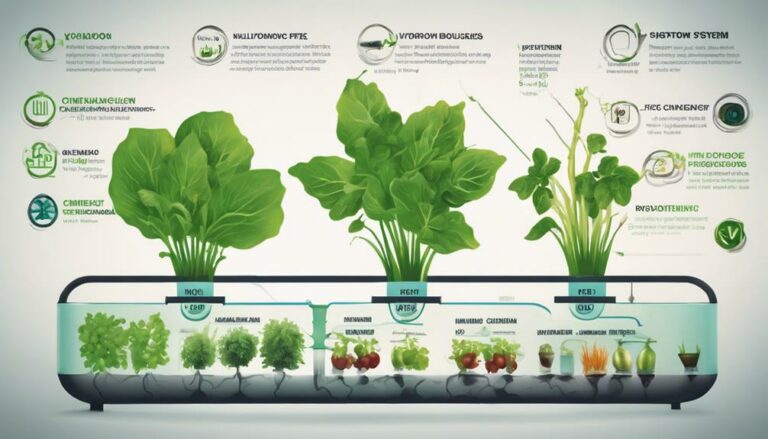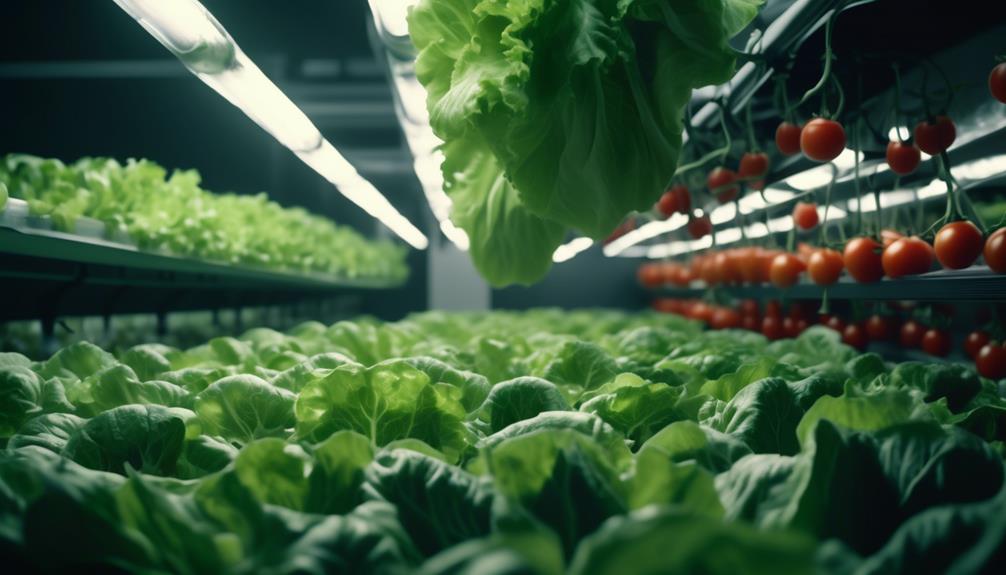Disclaimer: This article is for informational and educational purposes only and does not constitute legal or medical advice. The information and opinions expressed in this article are based on the author’s research and experience and do not reflect the views or endorsement of any organization or entity. The author is not responsible for any consequences or damages that may arise from the use or misuse of the information or methods described in this article. The reader is advised to consult with a qualified professional before engaging in any hydroponic weed cultivation activities and to comply with the laws and regulations that apply to their area.
Table of Contents
Introduction
Hydroponic weed is a term that refers to cannabis plants grown in a soilless medium, using water and nutrients as the main source of nourishment. Hydroponics is a method of cultivation that can be applied to various crops, but it has some specific advantages for weed growers. In this article, we will explore what hydroponics is, how it works, and why it can produce high-quality weed with less hassle and more efficiency. We will also guide you through the steps of setting up your own hydroponic weed system, choosing the best strains, germinating seeds, caring for plants, harvesting buds, and troubleshooting common problems. Finally, we will discuss some of the legal and ethical issues surrounding hydroponic weed cultivation, as well as the future prospects of this innovative technique.
Setting up a Hydroponic Weed System
Before you start growing hydroponic weed, you need to prepare a suitable location and select the right equipment. Depending on your budget, space, and preferences, you can choose from different types of hydroponic systems, such as ebb and flow, drip, deep water culture, aeroponics, or NFT. Each system has its own pros and cons, so you should do some research and compare them before making a decision. You also need to consider the size and number of plants you want to grow, as well as the electricity and water supply available.
One of the most important components of a hydroponic system is the nutrient solution. This is the liquid that provides all the essential elements for plant growth, such as nitrogen, phosphorus, potassium, calcium, magnesium, iron, and more. You can buy ready-made nutrient solutions from specialized stores or online, or you can make your own by following a recipe. You should always follow the instructions on the label or the recipe and adjust the dosage according to the stage of growth and the strain of your plants.
Another crucial factor for hydroponic weed cultivation is the pH level of the nutrient solution. pH is a measure of how acidic or alkaline a substance is, ranging from 0 to 14. The ideal pH range for hydroponic weed is between 5.5 and 6.5. If the pH is too high or too low, it can affect the ability of the plants to absorb nutrients and cause deficiencies or toxicities. You should monitor the pH level regularly using a pH meter or test strips and adjust it using pH up or down products if needed.
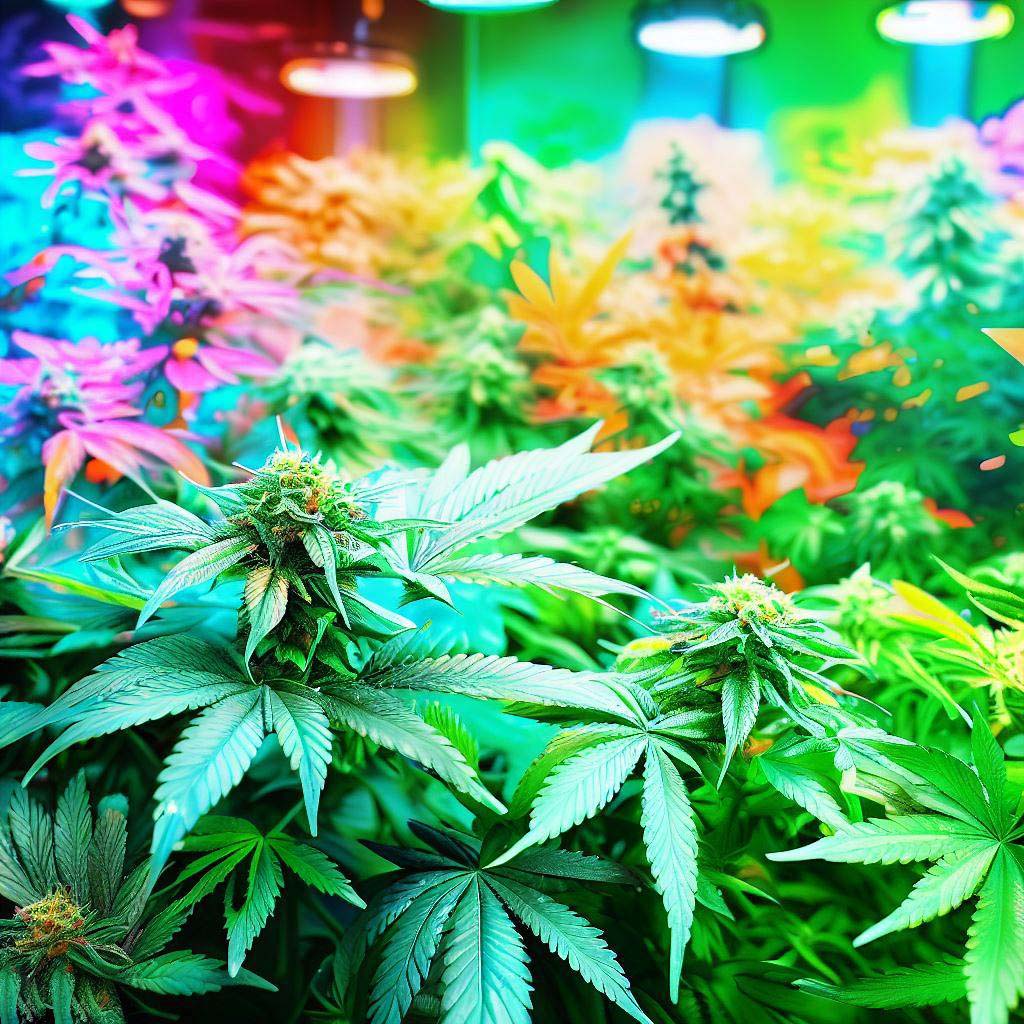
Selecting the Best Strains for Hydroponic Weed
Not all weed strains are created equal, especially when it comes to hydroponics. Some strains are more suitable for this method of cultivation than others, depending on their genetics, characteristics, and preferences. When choosing a strain for hydroponic weed, you should consider several factors, such as:
- Yield: How much weed can you expect to harvest from each plant? Some strains are more productive than others, and hydroponics can boost their yield even more. For example, Big Bud, White Widow, and Northern Lights are known for their high yields in hydroponics.
- Potency: How strong is the weed in terms of THC and CBD content? Some strains are more potent than others, and hydroponics can enhance their potency even more. For example, Gorilla Glue, Girl Scout Cookies, and Bruce Banner are known for their high potency in hydroponics.
- Flavor: How does the weed taste and smell? Some strains have more distinct and appealing flavors and aromas than others, and hydroponics can preserve their flavor even more. For example, Blueberry, Lemon Haze, and Pineapple Express are known for their fruity flavors in hydroponics.
- Growth: How fast and easy is the weed to grow? Some strains are more resilient and adaptable than others, and hydroponics can make them grow faster and easier. For example, Autoflowering strains, Indica-dominant strains, and Lowryder are known for their fast and easy growth in hydroponics.
Of course, these factors are not the only ones to consider when selecting a strain for hydroponic weed. You should also think about your personal preferences, budget, availability, and legal status of the strain. You can find many online resources and reviews to help you choose the best strain for your needs.
Germination and Seedling Stage
Once you have chosen your strain and set up your hydroponic system, you are ready to start germinating your seeds. Germination is the process of activating the seed and making it sprout a root and a stem. There are different methods of germinating seeds, such as using paper towels, peat pellets, rockwool cubes, or directly in the hydroponic medium. The most common method is to use paper towels, as it is simple and effective. Here are the steps to follow:
- Soak your seeds in water for 12 to 24 hours to soften their shells and trigger germination.
- Place your seeds between two moist paper towels and put them in a dark and warm place, such as a cupboard or a drawer.
- Check your seeds every day and keep the paper towels moist but not soggy. You should see a white taproot emerge from the seeds within a few days.
- Once the taproot is about a quarter of an inch long, carefully transfer your seeds to your hydroponic medium. Make sure the taproot is pointing downwards and the seed is slightly covered by the medium.
- Place your seeds under a low-intensity light source, such as a fluorescent lamp or a LED light. Keep the light on for 18 to 24 hours a day and maintain a temperature of 68 to 77°F and a humidity of 70 to 90%.
- Water your seeds lightly with plain water or a very diluted nutrient solution. Do not overwater or underwater them, as this can cause root rot or dehydration.
Your seeds should sprout above the medium within a week and enter the seedling stage. This is the stage when the first pair of leaves (cotyledons) and the second pair of leaves (true leaves) appear. The seedling stage lasts for about two to three weeks, depending on the strain and the conditions. During this stage, you should:
- Increase the light intensity gradually as your seedlings grow. You can use a high-pressure sodium (HPS) lamp or a metal halide (MH) lamp for better results. Keep the light on for 18 to 24 hours a day and maintain a distance of 12 to 18 inches from the plants.
- Increase the nutrient concentration gradually as your seedlings grow. You can use a balanced nutrient solution with equal amounts of nitrogen, phosphorus, and potassium (N-P-K). Start with a quarter of the recommended dosage and increase it to half by the end of the stage.
- Monitor the pH level of your nutrient solution regularly and adjust it if needed. The ideal pH range for hydroponic weed is between 5.5 and 6.5.
- Prune your seedlings lightly if they grow too tall or bushy. You can remove some of the lower leaves or branches to improve air circulation and light penetration.
Your seedlings are ready to enter the vegetative growth stage when they have developed at least four pairs of true leaves and have reached a height of six to twelve inches.
Vegetative Growth Stage
The vegetative growth stage is the stage when your plants grow rapidly and develop their structure and foliage. This stage can last from four to eight weeks, depending on the strain and the conditions. During this stage, you should:
- Provide optimal light for your plants. You can use a high-pressure sodium (HPS) lamp or a metal halide (MH) lamp for better results. Keep the light on for 18 to 24 hours a day and maintain a distance of 12 to 18 inches from the plants.
- Provide optimal nutrients for your plants. You can use a nutrient solution with a higher ratio of nitrogen than phosphorus and potassium (N-P-K), such as 3-1-2 or 4-2-3. Start with half of the recommended dosage and increase it to full by the end of the stage.
- Monitor the pH level of your nutrient solution regularly and adjust it if needed. The ideal pH range for hydroponic weed is between 5.5 and 6.5.
- Train and prune your plants to improve their shape and yield. You can use various techniques, such as topping, FIMing, LST, SCROG, or SOG. These techniques involve cutting, bending, or tying the branches of your plants to create more colas (flowering sites) and to distribute the light evenly.
- Manage the humidity and temperature of your grow room. The ideal humidity range for hydroponic weed is between 40 and 60%, and the ideal temperature range is between 68 and 82°F.
Your plants are ready to enter the flowering stage when they have reached their desired size and shape and have developed pre-flowers (small white hairs) at the nodes (where the branches meet the stem).
Flowering and Harvesting Stage
The flowering stage is the stage when your plants produce buds and resin. This stage can last from six to twelve weeks, depending on the strain and the conditions. During this stage, you should:
- Switch the light cycle to 12 hours on and 12 hours off. This will induce your plants to enter the flowering stage and produce female flowers (buds). You should also use a timer to ensure a consistent light schedule and avoid light leaks that can disrupt the cycle.
- Switch the light source to a high-pressure sodium (HPS) lamp or a full-spectrum LED light. These lights have more red and orange wavelengths that are beneficial for bud development and resin production. Keep the light on for 12 hours a day and maintain a distance of 12 to 18 inches from the plants.
- Switch the nutrient solution to one with a higher ratio of phosphorus and potassium than nitrogen (N-P-K), such as 1-3-2 or 0-5-4. These nutrients are essential for bud formation and maturation. Start with half of the recommended dosage and increase it to full by the end of the stage.
- Monitor the pH level of your nutrient solution regularly and adjust it if needed. The ideal pH range for hydroponic weed is between 5.5 and 6.5.
- Stop training and pruning your plants. You should avoid stressing your plants during the flowering stage, as this can affect their quality and yield. You should only remove dead or yellow leaves or branches that block the light or airflow.
- Manage the humidity and temperature of your grow room. The ideal humidity range for hydroponic weed is between 40 and 50%, and the ideal temperature range is between 68 and 77°F.
Your plants are ready to harvest when they have reached their peak potency and maturity. You can tell by looking at the pistils (hairs) and trichomes (crystals) on your buds. The pistils should be mostly brown or red, and the trichomes should be mostly cloudy or amber. You can use a magnifying glass or a microscope to examine them closely.
Harvesting your plants involves cutting, trimming, drying, and curing your buds. Here are the steps to follow:
- Cut your plants at the base of the stem using sharp scissors or a knife. You can cut them whole or in sections, depending on their size and your preference.
- Trim your buds by removing the large fan leaves and the small sugar leaves that surround them. You can use scissors or a trimmer to do this. You can save the trimmed leaves for making hash or edibles later.
- Dry your buds by hanging them upside down in a dark, cool, and well-ventilated area, such as a closet or a tent. You can use wires, strings, or racks to hang them. You should keep the humidity between 45 and 55% and the temperature between 60 and 70°F. You should also use a fan to circulate the air gently but not directly on the buds.
- Cure your buds by placing them in glass jars with airtight lids. You should fill the jars about three-quarters full and leave some space for air. You should also burp the jars daily by opening them for 15 to 30 minutes to release moisture and gas. You should keep the jars in a dark, cool, and dry place, such as a cupboard or a drawer. You should keep the humidity between 55 and 65% and the temperature between 60 and 70°F.
Drying your buds can take from five to fifteen days, depending on the size and density of your buds and the conditions of your drying area. Curing your buds can take from two to eight weeks, depending on your preference and patience. The longer you cure your buds, the better they will taste, smell, burn, and hit.
Congratulations! You have successfully grown hydroponic weed from seed to harvest!
Common Challenges and Troubleshooting
Growing hydroponic weed is not without its challenges and problems. You may encounter some issues along the way that can affect the health and yield of your plants. Some of the most common challenges and their solutions are:
- Nutrient deficiencies: These are caused by insufficient or imbalanced nutrients in your solution. They can manifest as yellowing, browning, curling, or wilting of the leaves, as well as stunted growth or poor bud development. You can prevent nutrient deficiencies by using a high-quality nutrient solution and following the dosage instructions. You can correct nutrient deficiencies by flushing your system with plain water and then adding fresh nutrient solution with the appropriate concentration and pH level.
- Pest control: These are caused by insects or mites that feed on your plants and damage their leaves, stems, or buds. They can also spread diseases and reduce the quality and yield of your harvest. Some of the most common pests are spider mites, aphids, thrips, whiteflies, and fungus gnats. You can prevent pests by keeping your grow room clean and sanitized, using filtered water and sterile medium, and inspecting your plants regularly. You can control pests by using natural or organic pesticides, such as neem oil, insecticidal soap, or diatomaceous earth. You should avoid using chemical pesticides, as they can harm your plants and yourself.
- pH fluctuations: These are caused by changes in the acidity or alkalinity of your nutrient solution over time. They can affect the ability of your plants to absorb nutrients and cause deficiencies or toxicities. You can prevent pH fluctuations by using a stable and buffered nutrient solution and checking the pH level regularly. You can correct pH fluctuations by using pH up or down products to adjust the pH level to the ideal range of 5.5 to 6.5.
These are some of the most common challenges and troubleshooting tips for growing hydroponic weed. However, there may be other issues that are specific to your situation or system. You should always observe your plants closely and look for signs of stress or trouble. You should also do some research and consult with other growers if you encounter any problems that you cannot solve on your own.
Maximizing Yield and Quality
Growing hydroponic weed is not only about avoiding problems, but also about enhancing the results. You can maximize the yield and quality of your harvest by applying some advanced techniques and strategies. Some of the most effective ways to boost your yield and quality are:
- Training and pruning techniques: These are methods of manipulating the shape and structure of your plants to create more colas (flowering sites) and to distribute the light evenly. You can use various techniques, such as topping, FIMing, LST, SCROG, or SOG. These techniques involve cutting, bending, or tying the branches of your plants to create a more horizontal and uniform canopy. You should apply these techniques during the vegetative stage or early flowering stage, as they can stress your plants and affect their growth.
- Environmental control: This is the process of adjusting and maintaining the optimal conditions for your plants’ growth and development. You can use various devices and tools, such as thermometers, hygrometers, fans, dehumidifiers, heaters, or air conditioners. You should monitor and control the humidity, temperature, light, airflow, and CO2 levels of your grow room. You should follow the ideal ranges for each factor according to the stage and strain of your plants. You should also avoid sudden or extreme changes in the environment, as they can shock your plants and reduce their quality and yield.
- Harvesting and curing: This is the final step of growing hydroponic weed that can make a big difference in the outcome. You should harvest your plants at the right time, when they have reached their peak potency and maturity. You should look at the pistils (hairs) and trichomes (crystals) on your buds to determine the best time to harvest. You should also trim, dry, and cure your buds properly to preserve their flavor, aroma, potency, and appearance. You should follow the steps outlined in the previous section to harvest and cure your buds correctly.
These are some of the most effective ways to maximize your yield and quality when growing hydroponic weed. However, there may be other factors that are specific to your situation or system that can affect the outcome. You should always experiment and test different methods and variables to find what works best for you and your plants.
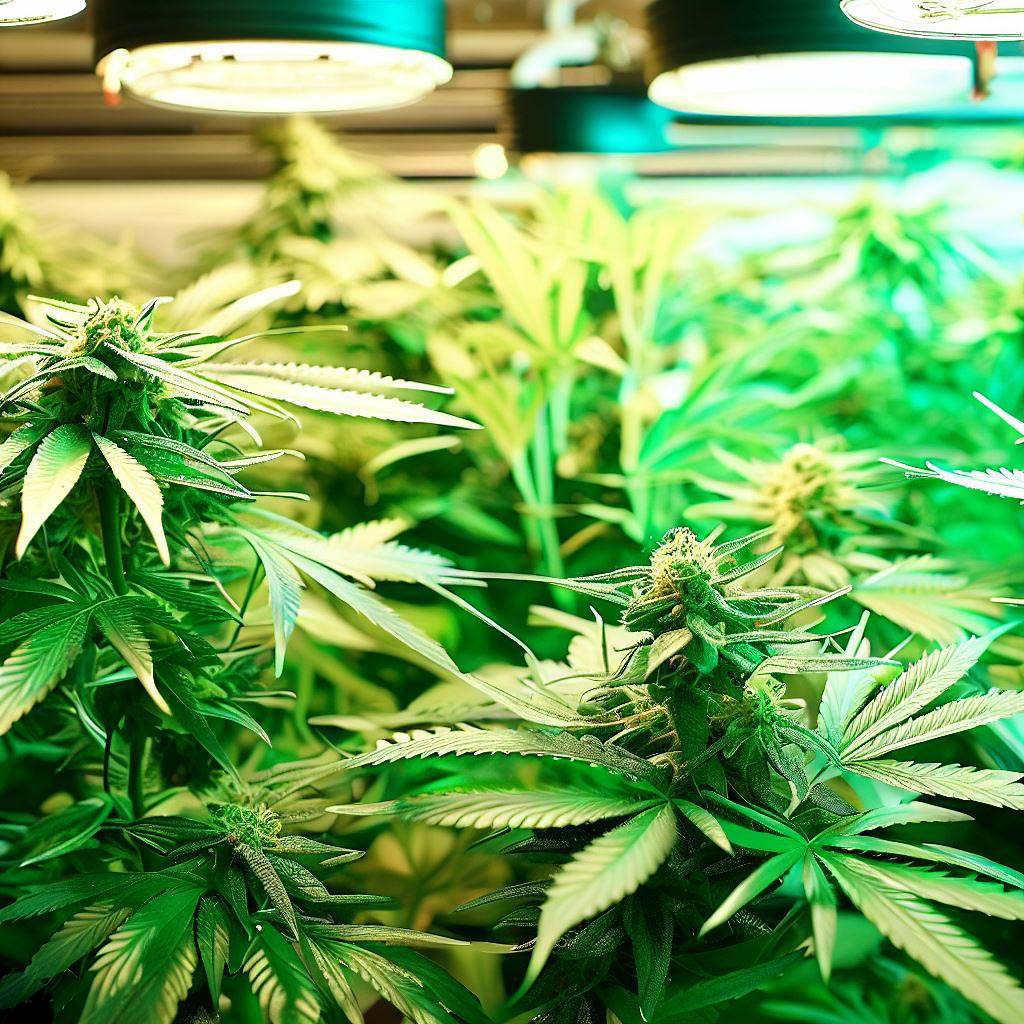
Sustainable Practices in Hydroponic Weed Cultivation
Growing hydroponic weed is not only about maximizing the results, but also about minimizing the impacts. You can adopt some sustainable practices in hydroponic weed cultivation to reduce your environmental footprint and save resources. Some of the most sustainable practices in hydroponic weed cultivation are:
- Water conservation: This is the practice of using water efficiently and avoiding wastage. You can conserve water by using a closed-loop or recirculating hydroponic system that recycles and reuses the nutrient solution. You can also use a drip or mist irrigation system that delivers water directly to the roots and prevents evaporation. You should also monitor and adjust the water level and flow rate of your system to avoid overflow or leakage.
- Energy-efficient lighting options: This is the practice of using lighting sources that consume less electricity and produce less heat. You can use energy-efficient lighting options such as LED lights, CFL lights, or solar panels. These lights have lower wattage and longer lifespan than traditional lights such as HPS or MH lamps. They also emit less heat and reduce the need for cooling devices. You should also use a timer to control the light cycle and avoid unnecessary lighting.
- Organic nutrients and pesticides: This is the practice of using natural or organic substances that nourish your plants and protect them from pests and diseases. You can use organic nutrients and pesticides such as compost tea, worm castings, bat guano, neem oil, insecticidal soap, or diatomaceous earth. These substances are biodegradable and harmless to your plants and yourself. They also improve the flavor and aroma of your buds and reduce the risk of contamination.
These are some of the most sustainable practices in hydroponic weed cultivation. However, there may be other practices that are specific to your situation or system that can improve your sustainability. You should always research and learn more about the environmental and social impacts of your growing methods and try to adopt more eco-friendly and ethical practices.
Legal Considerations
Growing hydroponic weed is not only about minimizing the impacts, but also about complying with the laws. You should be aware of the legal considerations that apply to hydroponic weed cultivation in your area and follow them accordingly. Some of the most common legal considerations are:
- Understanding local laws: This is the practice of knowing and respecting the laws and regulations that govern hydroponic weed cultivation in your state, county, or city. You should research and learn about the legal status, limits, and requirements of growing hydroponic weed in your area. You should also check for any updates or changes in the laws and regulations that may affect your growing activities.
- Ensuring compliance: This is the practice of following and meeting the laws and regulations that apply to hydroponic weed cultivation in your area. You should ensure compliance by obtaining a license or a permit if required, paying taxes or fees if applicable, reporting or registering your grow site if necessary, and following the rules and guidelines for growing hydroponic weed safely and responsibly. You should also avoid any illegal or unethical activities that may jeopardize your compliance or expose you to legal risks.
These are some of the most common legal considerations that apply to hydroponic weed cultivation. However, there may be other considerations that are specific to your situation or system that can affect your legality. You should always consult with a lawyer or an expert if you have any doubts or questions about the legal aspects of your growing methods and try to avoid any conflicts or troubles with the law.
According to the University of Cambridge (2021), cannabis farms are a modern slavery ‘blind spot’ for UK police and that those charged with drug cultivation have often been forced into illegal work as a condition of debt to criminal gangs for smuggling them into the country.
The Future of Hydroponic Weed
Growing hydroponic weed is not only about complying with the laws, but also about innovating and advancing. You can look forward to the future of hydroponic weed cultivation and expect some exciting developments and opportunities. Some of the most promising prospects are:
- Advancements in technology: This is the process of improving and enhancing the technology and equipment that are used for hydroponic weed cultivation. You can expect advancements in technology such as smart sensors, automated systems, artificial intelligence, biotechnology, nanotechnology, or blockchain. These technologies can make hydroponic weed cultivation more efficient, effective, reliable, and secure.
- Potential benefits: This is the process of discovering and demonstrating the benefits and advantages of hydroponic weed cultivation for various purposes and fields. You can expect potential benefits such as medical applications, industrial uses, environmental solutions, or social impacts. These benefits can make hydroponic weed cultivation more valuable, beneficial, and desirable.
These are some of the most promising prospects for the future of hydroponic weed cultivation. However, there may be other prospects that are specific to your situation or system that can inspire you and motivate you. You should always explore and experiment with new methods and ideas and try to contribute to the progress and growth of hydroponic weed cultivation.
Conclusion
Hydroponic weed is a term that refers to cannabis plants grown in a soilless medium, using water and nutrients as the main source of nourishment. Hydroponics is a method of cultivation that can be applied to various crops, but it has some specific advantages for weed growers. In this article, we have explored what hydroponics is, how it works, and why it can produce high-quality weed with less hassle and more efficiency. We have also guided you through the steps of setting up your own hydroponic weed system, choosing the best strains, germinating seeds, caring for plants, harvesting buds, and troubleshooting common problems. Finally, we have discussed some of the legal and ethical issues surrounding hydroponic weed cultivation, as well as the future prospects of this innovative technique.
We hope you have enjoyed reading this article and learned something new and useful. If you are interested in growing hydroponic weed, we encourage you to give it a try and see the results for yourself. Hydroponic weed cultivation is a rewarding and enjoyable hobby that can provide you with high-quality weed for your personal or medical use. However, you should always be responsible and respectful when growing hydroponic weed and follow the laws and regulations that apply to your area. You should also be mindful of the environmental and social impacts of your growing methods and try to adopt more sustainable and ethical practices.
Thank you for reading this article and happy growing!
FAQ
What is hydroponic weed and how does it differ from soil-grown weed?
Hydroponic weed refers to cannabis cultivated without the use of soil, instead relying on a soilless medium where water and nutrients serve as the primary nourishment. The distinction between hydroponic and soil-grown weed lies in their growth rate, yield, quality, and environmental implications. When compared to traditional soil cultivation, hydroponic weed showcases accelerated growth, amplified yields, enhanced potency, and reduced environmental impact. Additionally, hydroponic weed presents advantages such as water conservation, space efficiency, and avoidance of pesticides, setting it apart from its soil-grown counterparts.
Can I use any type of cannabis strain for hydroponics?
Yes, you can use a wide variety of cannabis strains for hydroponic cultivation. However, it’s essential to consider the strain’s growth characteristics, preferred effects, and flowering time to ensure successful results.
What are the advantages and disadvantages of hydroponic weed cultivation?
Some of the advantages of hydroponic weed cultivation are easier nutrient delivery, faster growth rate, water conservation, space saving, year-round growing, and cleaner and greener products. Some of the disadvantages of hydroponic weed cultivation are higher initial cost, more technical skills, more maintenance and monitoring, higher risk of system failure or infection, and lower margin of error.
What are some common pests that affect hydroponic weed?
Common pests that can affect hydroponic weed include aphids, spider mites, fungus gnats, and whiteflies. Implementing preventive measures and employing integrated pest management techniques can help mitigate these issues.
What are the legal and ethical issues surrounding hydroponic weed cultivation?
Hydroponic weed cultivation is subject to different laws and regulations depending on your location and purpose. You should research and learn about the legal status and limits of growing cannabis in your area and follow them accordingly. You should also obtain a license or a permit if required, pay taxes or fees if applicable, report or register your grow site if necessary, and avoid any illegal or unethical activities that may jeopardize your compliance or expose you to legal risks. Hydroponic weed cultivation also involves some ethical issues such as environmental impact, social responsibility, animal welfare, human rights, and public health. You should be mindful of these issues and try to adopt more sustainable and ethical practices when growing cannabis. You should also be respectful and responsible when using or sharing cannabis products.
